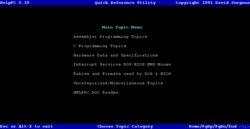YouTube Video: "Animation of the US Treasury Yield Curve with Inversions from 1962-01-01 to 2019-04-01"
Posted on 2019-04-03 23:30 by Timo Bingmann at Permlink with 0 Comments. Tags: #market #fun
Today I published the first animation of market data by my new charting tool on Youtube. In light of recent events this was an video of inversions of the US Treasury Yield Curve. The video is created with QCustomPlot and a large Qt program to process data.
The dancing green line plots the yields of all constant maturity treasury notes. The trailing blue line shows the efficient 30 day Federal Funds rate. The orange line is the broad stock market SPX index. The background of each day is painted red if an inversion of the 1y/5y, 1y/10y, or 2y/10y yields occurs. The darker the red color, the greater the inversion.
Watch the yield curve and the stock market index change over the decades, notice their behaviour in times of crisis. The video ends with the current inversion around April 2019. More about the yield curve and inversions: https://en.wikipedia.org/wiki/Yield_curve#Inverted_yield_curve
The Federal Funds rate data was taken from FRED (Federal Reserve Bank of St. Louis), series DFF: https://fred.stlouisfed.org/series/DFF. The US Treasury yields data was also taken from FRED, series DGS1MO, DGS3MO, DGS1, DGS2, DGS5, DGS7, DGS10, DGS20, DGS30, e.g. https://fred.stlouisfed.org/series/DGS30. Across the decades the various durations were sometimes not emitted, which is visible by points being added or removed from the green curve. SPX data was taken from Stooq.com, series ^SPX.





